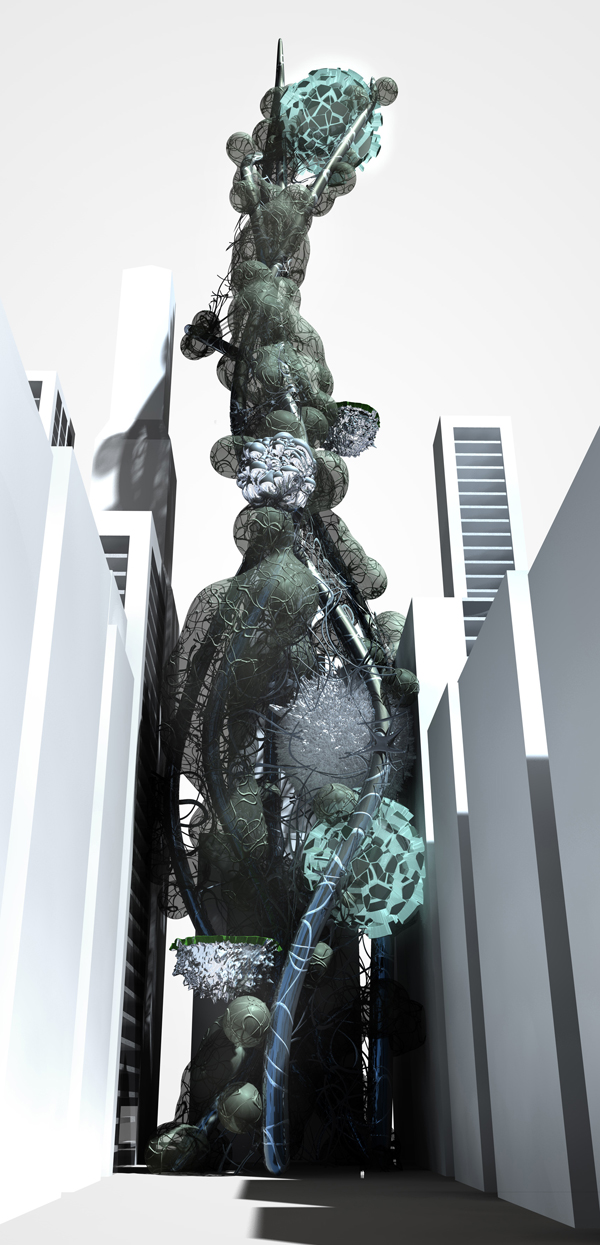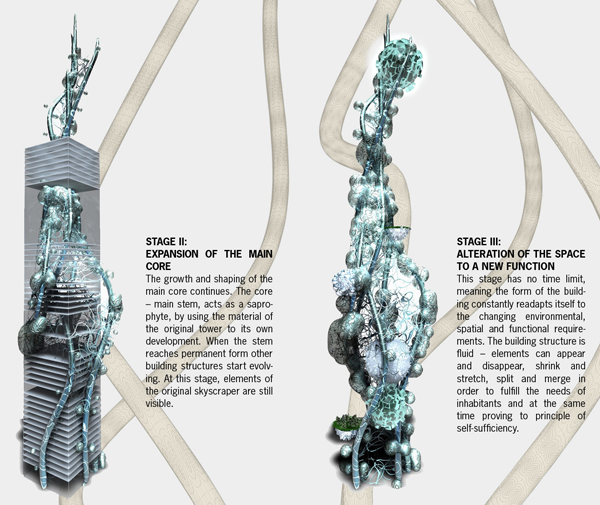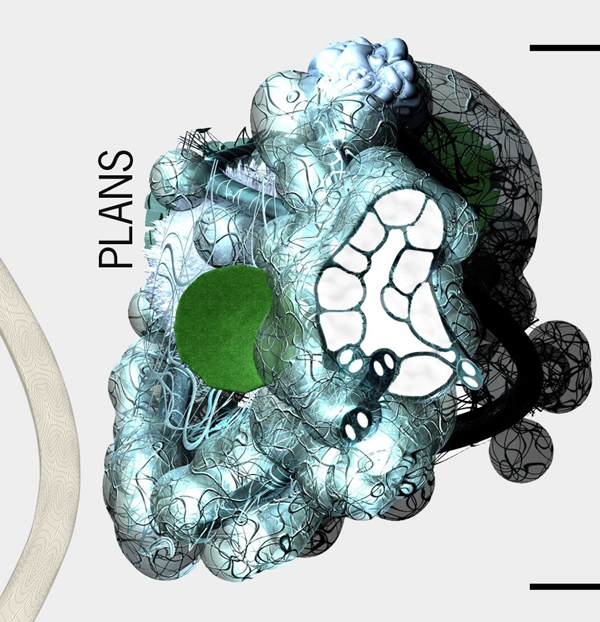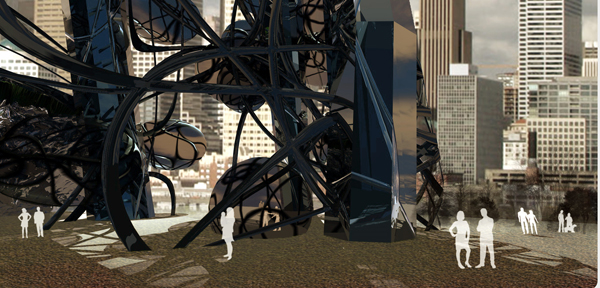Imagine a giant, amorphous algae vine swallowing a traditional skyscraper.
Now imagine living inside that growth.
This is precisely what Polish architecture students Karolina Czochańska, Emilia Dekarz, Paweł Dudko and Justyna Krupkowska have proposed with their ‘Saprophyte’ design. In the future, they say, corporations will retreat to the virtual world, and communications will reach a height to where people no longer need to commute from work. People will reclaim urban centers from the corporations that have abandoned them, and, working from home, will need to be served by a more adaptable, flexible and efficient living structure.
The students have combined biology and architecture – biomorphic architecture — to propose a living mass that overtakes typical skyscraper structures and transforms them into buildings that can shrink, grow, split, or change in any way needed by residents. And, the bio mass is self duplicating, meaning new buildings effortlessly appear – they sprout “like flora.”
The design is both economical and effective because, the students say, it is based on the principles of self-sufficiency and energy efficiency. The students reached their design ideas through a study of biomimicry and asking, what can we learn from nature?
As a living plant, the structure itself will be able to harness all the positive attributes that come from plant processes: the building’s skin will create its own green space, clean the air, store water and store electricity.
As time marches on, the Saprophytes transform the urban centers into the ultimate “green” living environs.



















